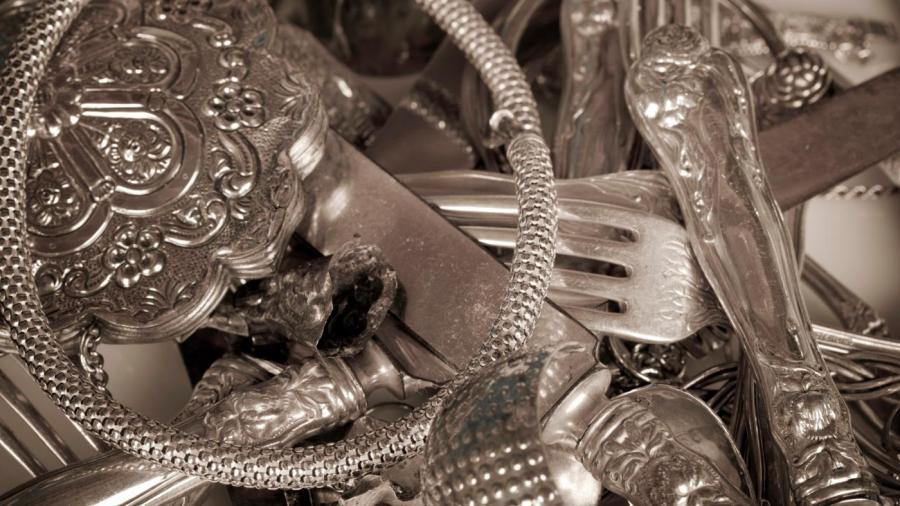Why Does Sterling Silver Turn Black?

Sterling silver turns black or tarnishes due to a chemical reaction caused by contact with sulfur or hydrogen. Some foods or everyday items containing sulfur can cause tarnishing, but even polluted air can turn sterling silver black.
Pure silver does not tend to tarnish. Sterling silver, however, is more susceptible to tarnish because it is a combination of silver and other more reactive metals such as copper. The sterling silver alloy may tarnish more easily than pure silver, but has far more uses than pure silver as it is far more durable. While tarnish is unavoidable, steps can be taken to reduce the amount of tarnish and prolong the life of sterling silver.
Avoid contact with sulfur-heavy items and foods. Latex gloves, wool and elastic items contain higher levels of sulfur and tarnish sterling silver faster. In addition, eggs, salad dressings and onions also speed up the tarnishing process. Even avoiding these types of items does not entirely prevent sterling silver from tarnishing, however. Sulfur or hydrogen produced by fossil fuels and burning coal or wood eventually cause tarnishing in most industrialized areas. The best way to prevent sterling silver from turning black is to perform regular maintenance. Clean sterling silver with a silver polishing cloth and occasionally a silver polishing compound to keep the tarnish from accumulating.





